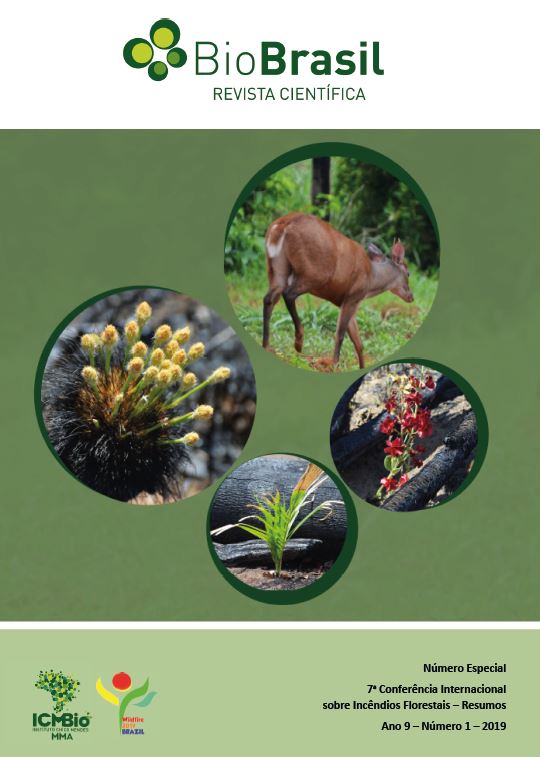Identifying residential wildfire risk reduction successes and failures using an ecosystem approach
DOI:
https://doi.org/10.37002/biodiversidadebrasileira.v9i1.1075Palavras-chave:
Community risk reduction, community engagement, volunteer, Wildfire, wildland urban interface, structural lossResumo
This presentation will explore the global threat to life and property from wildfire and demonstrate examples of positive community engagement work. In the United States and around the world, a complacent that underestimates their risk to wildfire and a series of other trends have contributed to increased wildfire risk. In recent years, we have observed both failures and successes in wildfire risk reduction, including the failure of local authorities to use and enforce sound development and construction standards, and successful engagement of people living with the risk of wildfire in ways that empower residents and bring about behavior change.The tenets of Integrated Fire Management and Community Based Fire Management rightly seek to involve the right people at all stages of wildfire risk reduction. As NFPA has seen the wildfire loss trends persist, we've started to connect the dots on all the vital elements of safety that must be in place to reduce loss. This is what NFPA calls the "Fire and Life Safety Ecosystem". It is a framework for how we talk about what it takes to keep people and property safe. Its application to wildfire, and the role it calls for in an "informed , is illuminating.A full system of fire and life safety depends on cogs working together. These are, government responsibility, development of codes, use of reference standards, investments in safety, ensuring a skilled workforce, code compliance, emergency response capability, and an informed When a wildfire tragedy occurs, we can almost always trace back to the breakdown of one or more components.Today, there are many examples that point to gaps, cracks, and weaknesses in the Fire & Life Safety Ecosystem around wildfire. Often, it's because safety is taken for granted. When, wildfire is not priority for policymakers, the lacks understanding, codes are watered down or not properly enforced, tragedy is bound to occur. Community engagement is key to ensuring the cogs of this ecosystem work together. When the is properly educated and informed, they can act to protect themselves and hold policymakers accountable for the safety of their communities.
Downloads
Referências
n/a
Downloads
Publicado
Edição
Seção
Licença
Copyright (c) 2021 Biodiversidade Brasileira - BioBrasil

Este trabalho está licenciado sob uma licença Creative Commons Attribution-NonCommercial-NoDerivatives 4.0 International License.
Os artigos estão licenciados sob uma licença Creative Commons Atribuição-NãoComercial-SemDerivações 4.0 Internacional (CC BY-NC-ND 4.0). O acesso é livre e gratuito para download e leitura, ou seja, é permitido copiar e redistribuir o material em qualquer mídia ou formato.











